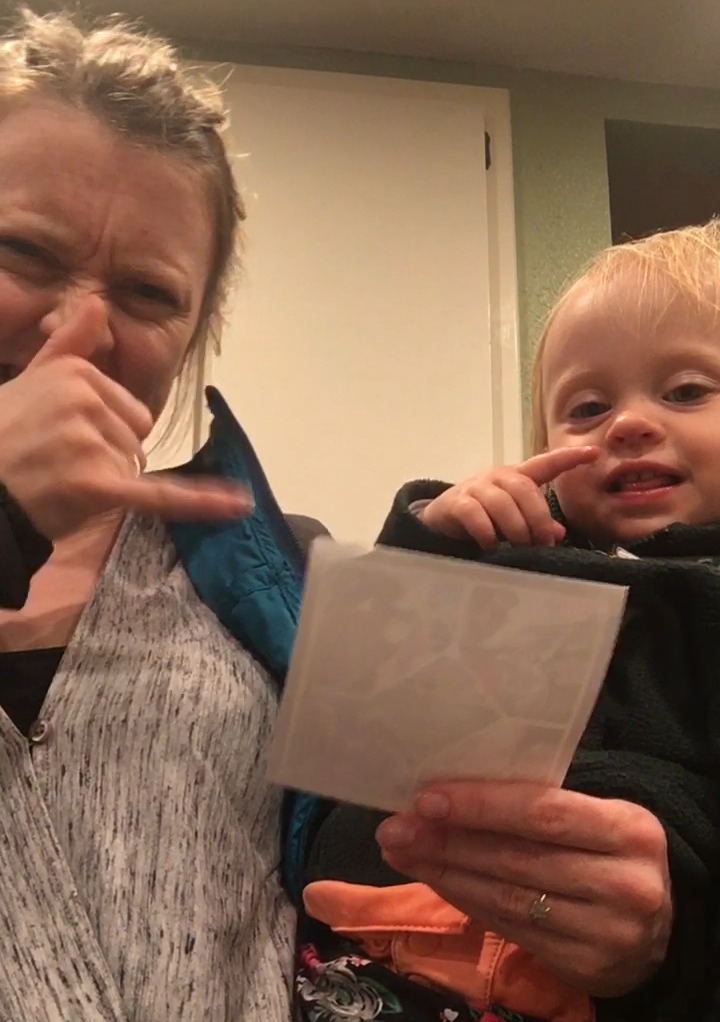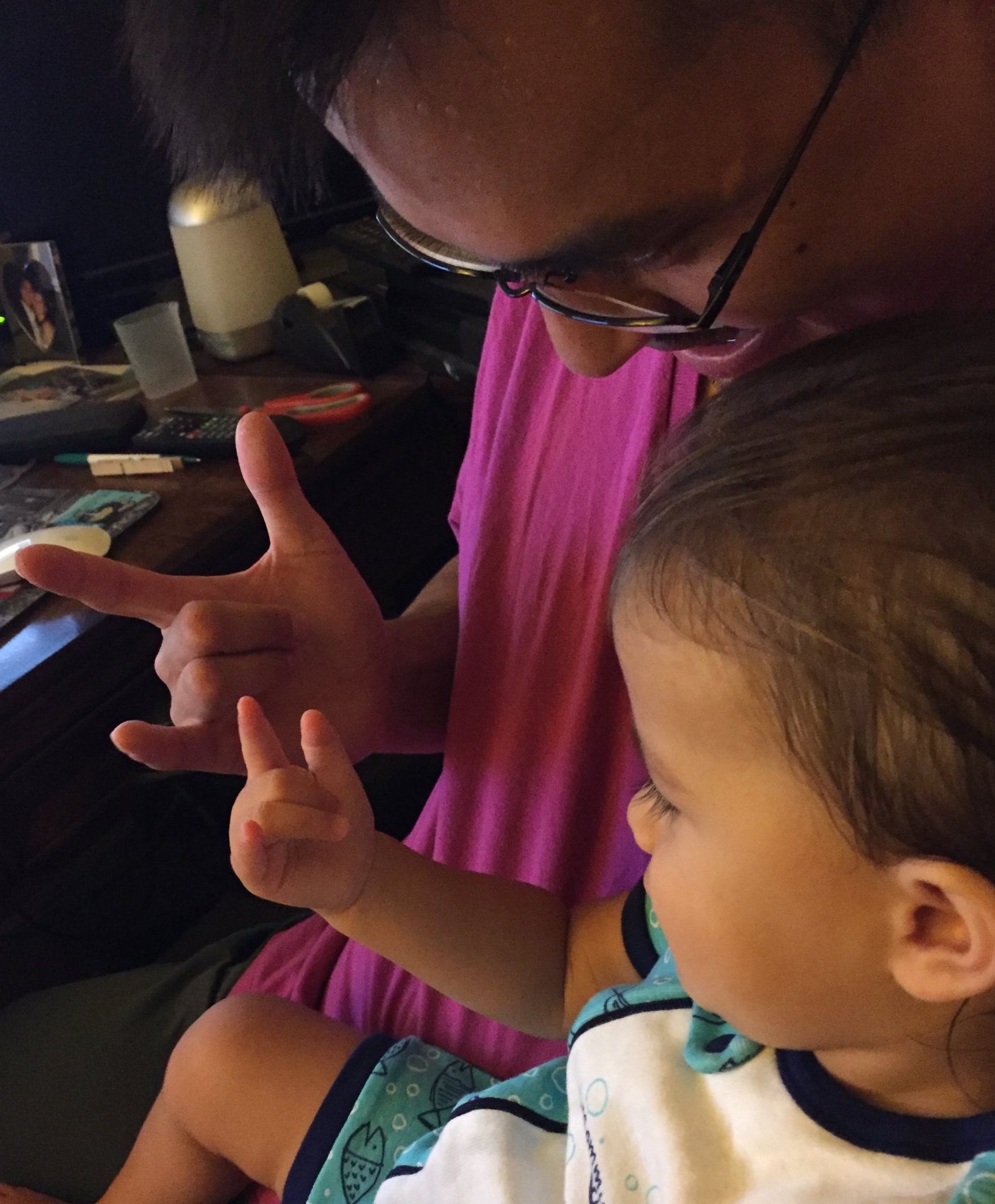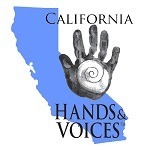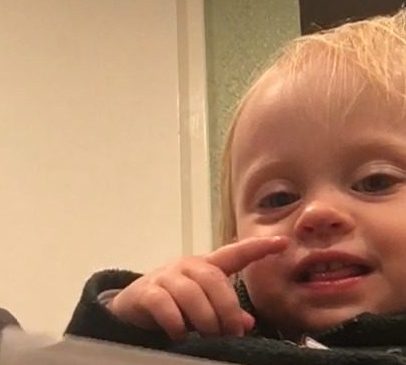Razi M. Zarchy, MS, CCC-SLP and Leah C. Geer, PhD
Our names are Razi Zarchy and Leah Geer. Razi is a hearing speech-language pathologist (SLP) with over 10 years of experience in deaf education. Leah is a deaf Associate Professor of Deaf Studies at California State University, Sacramento. She has 10 years of experience teaching American Sign Language (ASL). Together, we wrote the innovative, family-centered curriculum called ASL at Home. This is our story.
It was Halloween 2019 and we were on our way to a conference. We had had quite the day of travel woes with cancelled and delayed flights and the dreaded endless layover. We were stuck at the St. Louis airport and growing restless. Razi started talking about his work with deaf and hard of hearing (d/hh) students ages birth to five. He empathized with the frustrations many parents of young d/hh children experience. For those who decided to learn ASL, they found it a monumental task to actually learn the language. With at least one young child at home, college classes were usually out of reach, and even if parents did take classes, most did not teach what parents needed to know. When school district staff and deaf mentors/coaches came into the home to teach the parents ASL, there were no curriculum options tailored to their needs. He wished that there were a family-friendly ASL curriculum that he and his colleagues could bring to home visits, or offer in a class, to promote these students’ language acquisition by supporting their parents’ ASL learning.
We weren’t going anywhere — not for a while anyway — so we pulled out our phones, created a new Google Doc, and started thumbing in our ideas. We immediately decided that the curriculum should follow the day-to-day routines of young children, since they are the cornerstone of family-centered early intervention. The curriculum would have to be accessible for use during one-on-one home visits in early intervention, and would also be handy if usable in a class format. Leah suggested including aspects of Deaf Community Cultural Wealth, so that parents could learn about the rich cultural background their child was inheriting. Always thinking like an SLP, Razi suggested using the tried-and-true early intervention approach of teaching parents to use language enrichment techniques, so that they could have some concrete ways to provide their children with a language-rich environment. The outline started to look promising.
Eventually, we got on the plane, landed in Philadelphia, then raced to our destination in New Jersey with an actual tornado in hot pursuit. The next day was the conference, then we made the trip back across the country to our Sacramento home. We all but forgot about our idea for an ASL curriculum, as the rapid pace of the school year swept us up in its wake.
That is, until spring 2020, when our lives were turned upside down by the COVID-19 pandemic. Razi’s job changed significantly with the transition to distance learning. Instead of working directly with many of his youngest students, and because he could no longer do home visits, he began spending a lot more time working with parents. On our daily dog walks — our reprieve from Zoomdom — we started to revisit our curriculum idea and flesh out what we wanted our airport idea to turn into. Leah started to refer to the idea affectionately as “our book.”
In the early days of the stay-home order, we revived the original outline and came up with the daily routines around which we based each chapter. We developed sections on vocabulary and expressive and receptive phrase practice. Then, as Leah filmed a number of instructional videos to teach the various ASL language skills, Razi focused on his “bread and butter:” language enrichment. These sections in each chapter give families specific tools to use their new vocabulary and sentences in a targeted way, applying evidence-based techniques that SLPs use with children in their clinical practice across languages and modalities. For example, the language enrichment techniques teach families to imitate their child, to teach their child to imitate them back.
Each chapter concludes with Leah’s “bread and butter:” a discussion of Deaf Community Cultural Wealth. As a deaf-and-hearing team, it was important to us to include this section, because we know that parents and families of d/hh children are presented with a great deal of information when their child is first identified. Much of this information may stress what their child can’t do because of their hearing status. We wanted to highlight the wonderful, culturally rich aspects of being deaf. We also wanted to encourage parents to start thinking about their own support system and skills, as well as the aspects of Deaf Community Cultural Wealth (e.g., linguistic capital: the wealth of knowing multiple languages) they can seek out for their children to grow and thrive as deaf individuals.
In July 2020, we released our book online, first in English, then later in Spanish, and were immediately overwhelmed by the amount of interest and the positive comments we received. It turned out that, by creating the tool that Razi wished he had for his own practice, we had stumbled upon a widespread need felt by many other families and professionals. We taught our first Learn ASL at Home class in early 2021, and have many plans in the works for the next edition of the book. We are incredibly grateful for our ASL at Home community, and look forward to providing continued support to families of d/hh kids ages birth to three…and beyond!
(For more information: ASLatHome.org)



